The 50 States Project is a series of candid conversations with interior designers across the country about how they’ve built their businesses. This week, Omaha, Nebraska–based designers Mark and Mikal Eckstrom of Studio Eckström tell us how they delineate their work roles as married partners, why they embrace the idiosyncrasies of the design process and how their location informs their work and success.
How did the two of you meet and decide to launch your firm?
Mark Eckstrom: Mikal and I had moved to Nebraska at about the same time—my background was always in magazine publishing, and I had moved back home to beta test a free distribution model concept, which didn’t work out. Mikal had moved to Nebraska to pursue his Ph.D. in history, and we met online in 2011.
I’ve always been interested in design. My mother was an interior designer, and I grew up in her studio. I’m an architecture-school dropout. It was one of those passions where I thought, “If I pursue this, am I going to grow to dislike my passion?” And the universe took me in a different direction until design became an act-three career for both of us.
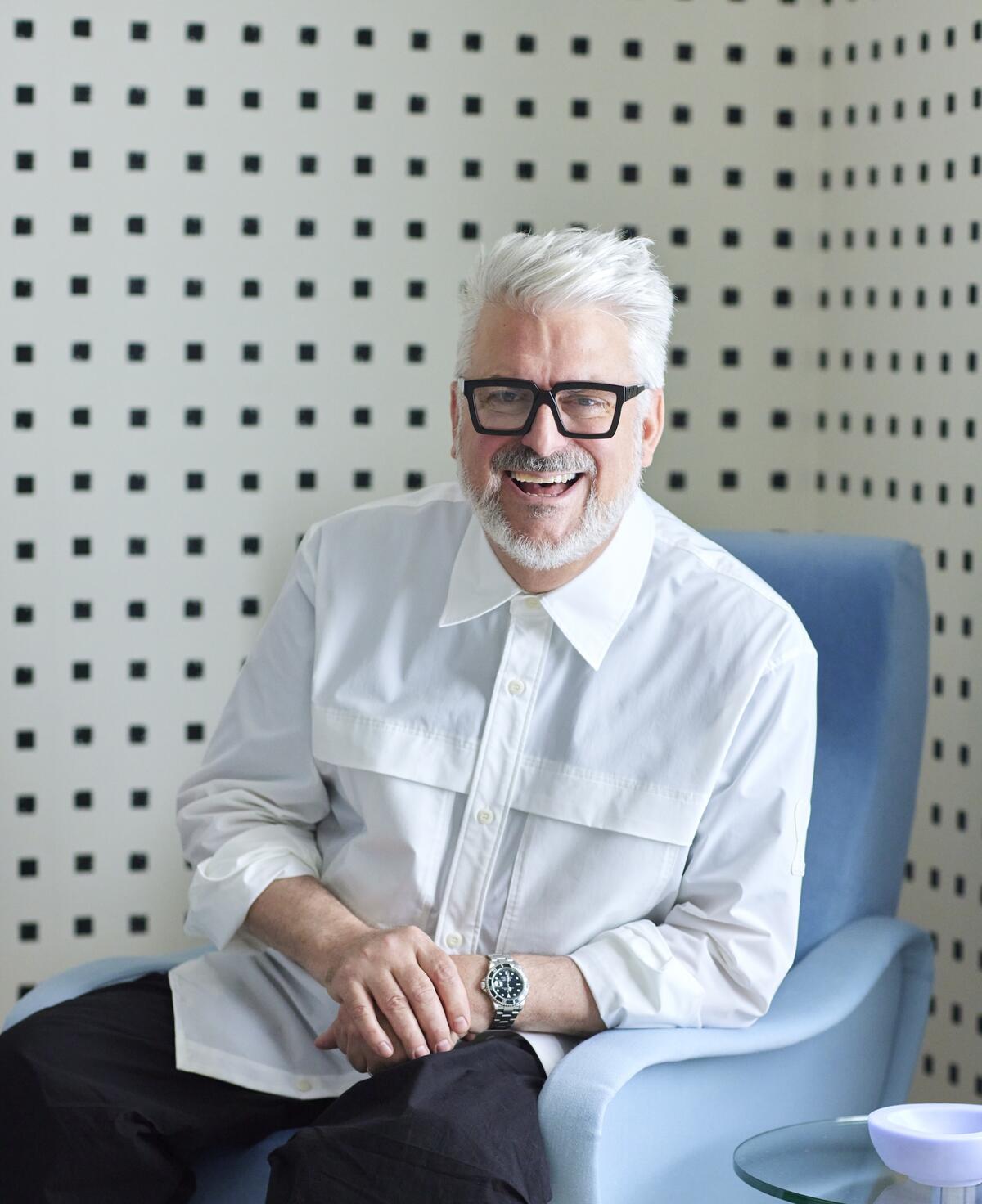
How did that start?
Mark: It started out as a side hustle. We worked on our own home, and we realized when we survived the renovation that we could get married. Because we’d lived through that, we knew we could do anything together. And then people were coming to our home and saying, “This is really great, will you help us with our home?” It was very organic, very word-of-mouth, and we only took clients who were friends or family for several years. Then, in August 2022, my corporate job wanted me to make a cross-country move, which I really did not want to do. So I took the money and said, “Let’s use this to launch our firm.”
Tell me a little bit about that work for friends and family: How formal was your side hustle? Were you documenting the work, laying the foundation for something bigger?
Mark: Coming off of corporate careers, we approached this the way we would approach anything that we had done marketing- or sales-wise: We would discuss the project, listen to the design directives, then give a presentation of what we would do if it were our house—you know, “your life, our way.” And we were charging for our time, as well as a margin over the purchase price of goods. We incorporated under the name Maison MxM—that was basically Mark times Mikal. When we started doing it full-time, we shifted that name to Studio Eckström.
What was behind the rebrand?
Mark: A lot of people were confused by the word “maison”—they didn’t know that that meant “house.”
Your friends-and-family business sounds much more formal than a lot of the starter projects I hear about.
Mark: Approaching it with a business acumen attached to the lens of interior design really helped push us along. It was interesting, because clients would say, “We’ve worked with interior designers for years, but nobody’s ever come in with a spreadsheet. Nobody’s ever prepared with dimensions.”
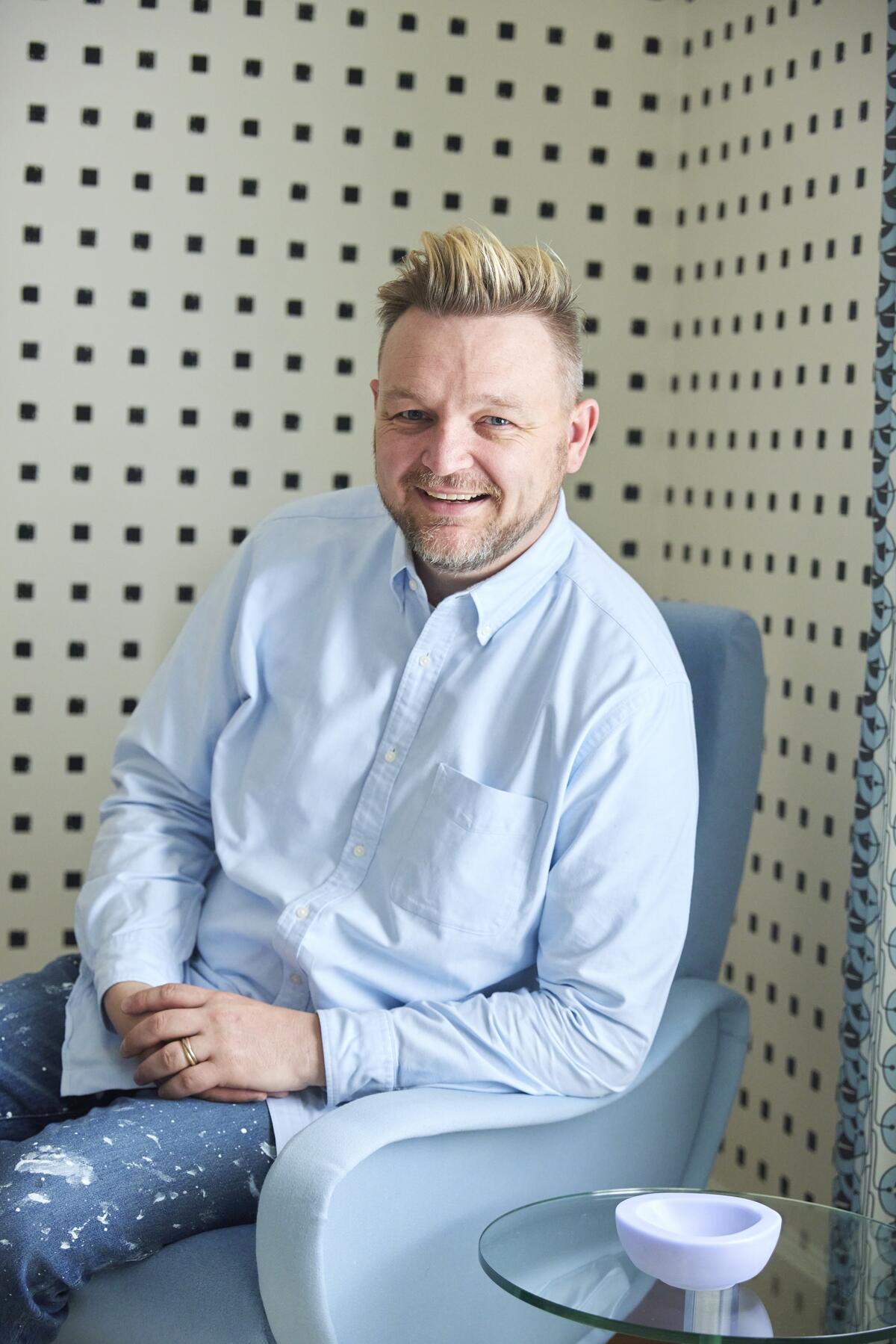
Mikal Eckstrom: And it’s important for our clientele because more often than not they’re C-suite executives who live in Excel. To meet them where they’re at is huge.
We did start with family and friends, but early on we had one project—we call it the Casa project—that was an entirely different kind of project for us, in that it was over six figures, and it really did make people pay attention to us as a viable option.
Mark: The client was a high school friend of mine who was living in London, and he was moving his family back home to Nebraska. We went and viewed the house, with him on FaceTime—he bought the house just through that video walk-through with us, a seven-figure purchase for him over the phone—and then he gave us a budget to transform it. Everyone in the neighborhood was talking about it, and it made the cover of Omaha Home magazine in 2022. That really put us on the map.
Mikal: It was the project that got us introduced to [former House Beautiful editor in chief and design journalist] Sophie Donelson.
Mark: We had met her at the Lauritzen Garden Antique & Garden show at the Omaha Botanic Garden the previous year, and she has been instrumental in helping guide us on this journey. When we were going through the process [figuring out how to] coordinate the photo shoot, she was the one who really kind of put those ducks in a row for us: that we needed to hire the best photographer, work with the best stylist and so on.
Did that help to normalize the cost of that type of investment?
Mark: Absolutely. We actually weren’t able to do it for that project, because it was in the height of Covid and nobody was traveling, so we worked with a local photographer and finessed those images as much as we could. We were working on our house at the same time, using it as an experimental design lab. So when that was complete, we had Read McKendree and Mieke ten Have come out to shoot it for Architectural Digest. And that all happened within the span of a year.
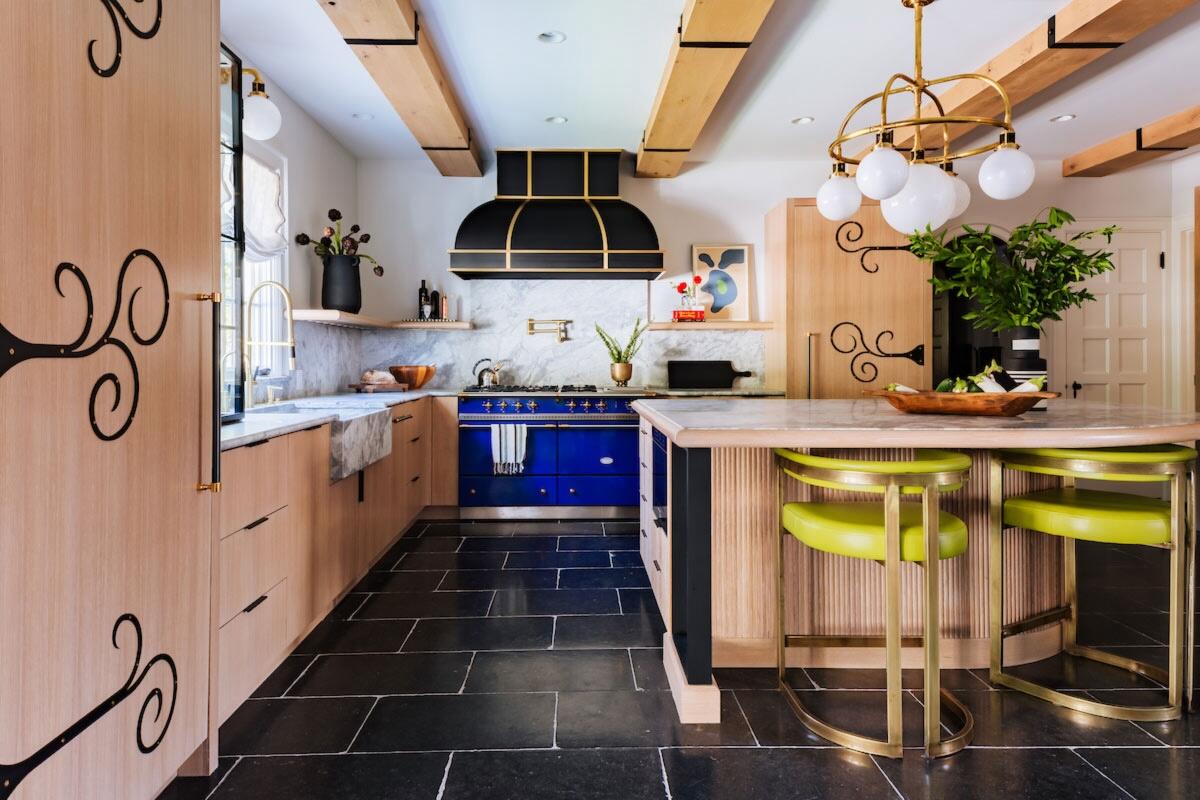
You talked about meeting clients where they are. How else does your process or approach tap into that kind of thinking?
Mikal: The biggest tell in our onboarding process is that we work with three nonprofits, and we ask clients to donate our initial consultation fee to one of them. If they don’t want to donate, then we’re not going to be a fit. Because for us, being involved and investing in your community is a fundamental value.
Mark: Our initial consultation fee is $300 for an hour of our time, and it goes to charity in part because we didn’t feel like we should profit from it. It’s like a blind date, essentially. If it goes to the community, there’s not really any bitterness attached to that even if we end up saying no to the project.
Who is your ideal client, or what jobs make you want to say yes these days?
Mark: When we started out, we were eager and wanted to take on as many projects as we could, because we knew we would learn from every single project, and when we know better, we do better. But we’ve come to notice that there is a pattern to who does hire us: It’s families that are cerebral and well traveled, who enjoy being challenged and who enjoy the creative process. They realize that creativity in design is a nonlinear process—that there can be false starts and rabbit holes. That’s an important thing to teach any client, just in terms of managing their expectations about how design works.
Mikal: On the other hand, our data tell us that our clients are executives who are heavily involved in the community on the philanthropic side. They have that same mission that we do as people, and that alignment is really important for everyone.
It’s interesting to me that clients really are coming to you for your lens—you said “your house, our way” earlier. Is there ever a desire on a client’s side to play it a little safe, and how do you navigate that pushback?
Mark: Oh, there’s always going to be a little bit of that. And those aren’t really clients who are probably going to be a good fit. We make a joke from the get-go that we’re not cut-and-paste designers. So when we go into a project, we’ll do the research on the history of the house. We’ll do research on the neighborhood, the design style, the architecture, the period, and then we’ll pull inspiration from their personal collections. It could be artwork, it could be the clothes that they wear, it could be fabrics or colors that they gravitate to, and then we find a gesture that starts the through line for the idea of a collection of rooms and how we pull it together. And oftentimes, that’s not beige. I think that people are getting weary of that RH aesthetic of the white linen curtains, beige limewashed walls, everything being neutral. Because everybody’s seen it before. Every neighbor has it. Every neighbor has a modern farmhouse. And I think there’s a pendulum swing now headed in a different direction than what it has been for the last even 15 years. Do you see that as well? I find that people’s aesthetics are shifting.
I think the design industry’s aesthetic is shifting—but I also think there are still a lot of retailers selling beige floor sets. If customers are going into a store by themselves, that may be driven by a lack of confidence as much as personal preference.
Mikal: When we do a presentation, we do a lot of education. We talk about how the opening of Japan influenced the Werkstätte movement and why they should care. And at the end of our projects, they get a binder full of biographies of the furniture makers and decorative artists so that they can continue to have a relationship with the pieces in their home. We’re in the bespoke market, so that’s the level of service that our clients expect.
Mark: Our background is storytelling—that’s part of our DNA. We want to tell their story from our point of view. What we want [to elicit] is that lightbulb moment: “Oh, I would never have thought of that, but it’s so amazing and I can’t wait.” That kind of excitement from a client is such an adrenaline rush.
Mikal: Part of that storytelling is building trust with the client. Our clients are very smart people, so they love the opportunity to discuss art or books or furniture movements. We are in the dream business, and we take that very seriously.
Mark: I remember hearing Warren Buffett talk about what made Berkshire Hathaway successful, and he was like, “It’s because we’re in Omaha, Nebraska.” Because we’re not on the coast, we don’t have that same bombardment of different influences hitting us—and that’s true for design too. We’re not living in a vacuum yet, so we can stay true to our style and our DNA, and I think that that’s important.
Let’s talk about setting up shop in Nebraska—how else did that inform the way you structured your business?
Mark: We both moved back to be close to our families, and we love it here. There are direct flights to anywhere in the country from Omaha, the cost of living is nothing and it’s a fairly progressive city in a sea of red—we’ve got all of that going for us. And we have found a very sophisticated clientele base as well; we’ve been very fortunate to work with like-minded people.
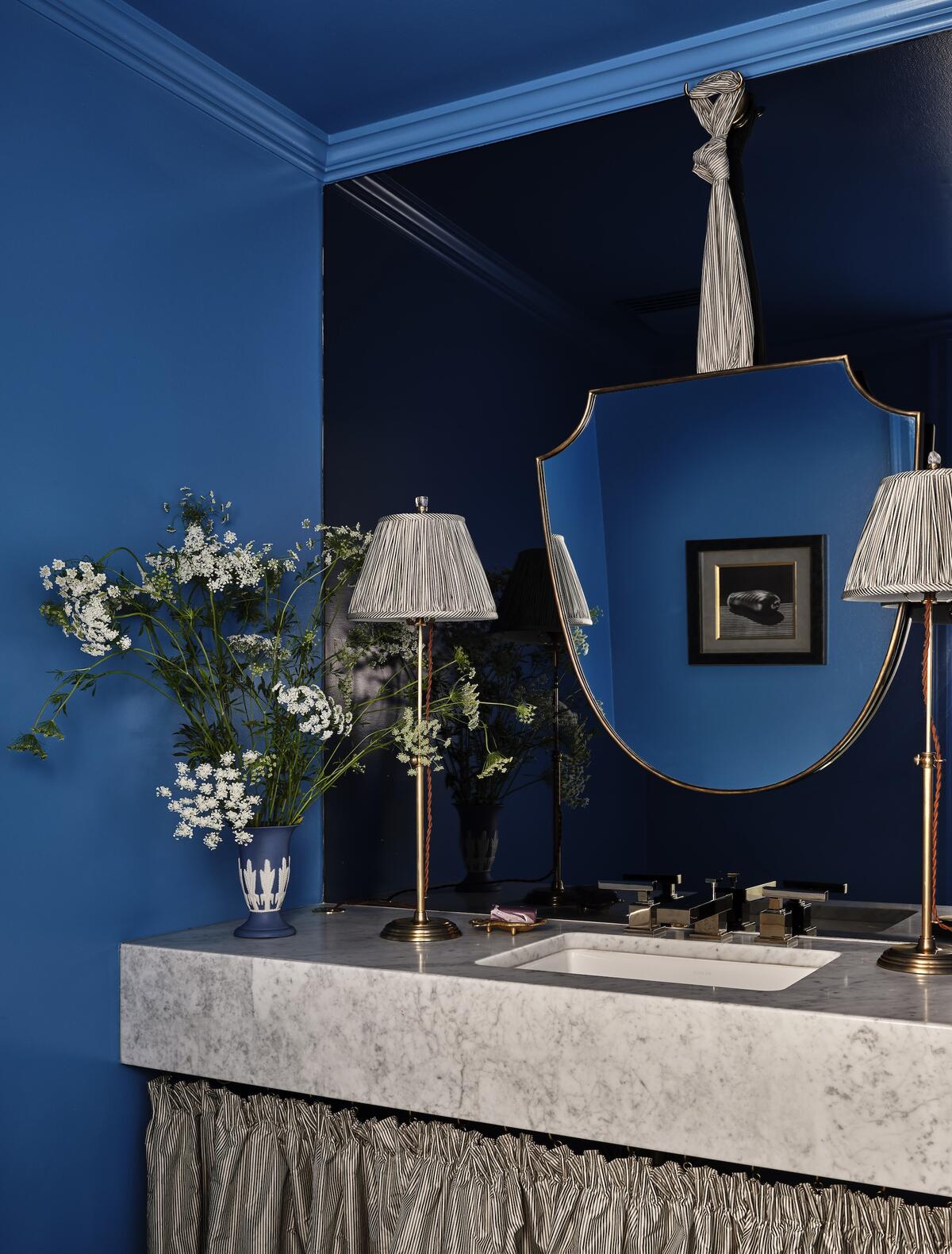

What does the business look like today in terms of how many projects you are working on at a given time? What’s a full plate?
Mark: It’s intense. You know, there was a moment when we launched this firm that we looked at each other, and thought, “Did we make the right decision?” And then it became clear that we had when we got a phone call to do a refresh of one of Omaha’s iconic homes, and things took off from there. It’s been very lovely. Now we’re doing commercial projects as well. We have about 10 projects currently in operation. And I’ve got to say, our revenue is great. We’re exceeding all our expectations. We hit our yearly goal in March. So we’re rocking and rolling right now.
That’s awesome. Is it just the two of you, or do you have a team?
Mark: It’s just the two of us. We have clear delineation in how we work. I handle design. And Mikal is everything else. He’s got the [rest] of the work.
How do you find balance between the two when the design-business split can be so lopsided and heavy on logistics?
Mark: Well, Mikal is a Virgo, so he’s very organized.
Mikal: Very type A.
Mark: Yes, and everything is in spreadsheets and accounted for. As we grow, we know that we have to bring on additional staff, but we outsource a lot right now in terms of drafting, elevations and rendering—all of that back-office stuff is farmed out, so Mikal can focus on client relations, project and vendor management.
Mikal: Originally everything was in spreadsheets, but we are getting ready to move [our operations] to Studio Designer, which will allow our clients to log in at any time and see exactly where everything is in the process. It has the ability to communicate with our vendors. It’s going to take a lot of that lifting off of my plate.
You get a lot of time back, I would think—even just answering questions like, “Where is this?” or “What’s happening with that?”
Mark: Well, I don’t think it will actually change that. We’ve found that even though we do weekly updates and share our spreadsheets with clients, they don’t look. They still call us and say, “Where is it?” We’re like, “Let me open the spreadsheet and I’ll tell you.”
Mikal: It’s no different than how they live their work life, which is they’re used to getting reports all the time, and they just look at them when they want to or need to. We’ve learned the hard way that what they really want is to know that they can call, ask and have an answer.
As we take more jobs, we’ve learned [those nuances] from them. And trust me, our contract reflects every hard lesson we have learned.
How do you create boundaries?
Mark: We have in our contract that weekends are [off-limits]—we need to be able to focus on ourselves and our [personal] relationships over the weekend. No texts after 6 p.m. on working days. And we request no texts in general—if they have a question, they can send it via email, and our goal is to respond within 24 hours. There doesn’t need to be that sense of urgency [clients sometimes have around] some of these questions—they will be up to date if they just look.
Mikal: We have standing meetings with some clients, where we meet with them for an hour every week just to get them up to speed.
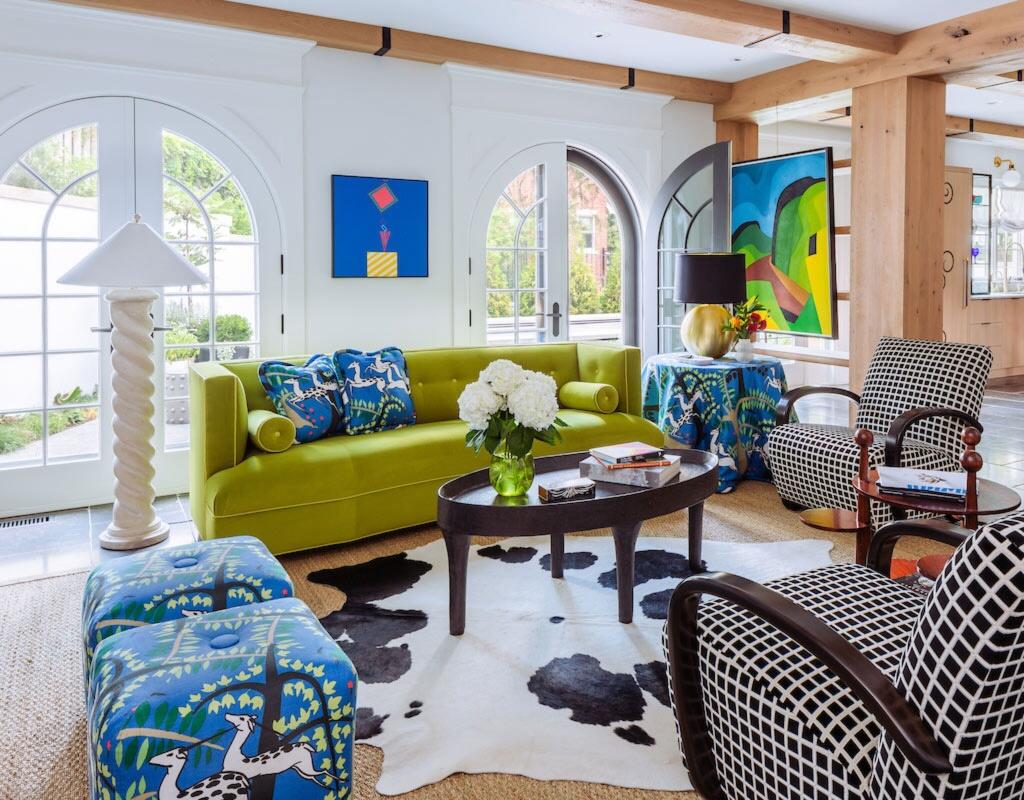
How have you approached billing for the work?
Mark: Honestly, I always just assumed that everybody could visualize moving walls in their head, or imagine how a pattern would look on the walls. I thought everyone could do these things that I’ve done my entire life! It wasn’t until I started this business that I realized most people can’t visualize anything. It was surprising at first, but then I realized, “Oh, that’s our intellectual property—they’re paying for our ability to do that.” So then it just becomes the task of putting it on paper and working with our renderer so clients can see it as well, and then charging for that work.
Mikal: Despite having a very process-oriented perspective, I think the fact that design is so idiosyncratic—that it has dead ends and circuitous routes—is actually the beauty of it.
Mark: We’ve tracked our analytics. We now know what it costs for our design fee per square foot of the project—then we can do the math on what those projected hours are. The only thing that is the variable is how high-touch the client is. Certain clients require much more hand-holding than other clients who give us carte blanche, so that’s really the only thing [that’s unpredictable that we charge as] billable hours. It’s no different than a law firm or accounting firm. We’re on a cost-plus-20 model. It doesn’t matter where it comes from. If we selected it or we approved it, it’s a 20 percent [upcharge].
Have you ever questioned that model?
Mark: Well, when we first started, we did a project that was a flat fee. And that was an educational experience for us because we learned that it will take more hours [than you expect and] that you’re going to lose money on a flat-fee basis. So we just don’t want to work that way. And we found that cost-plus-20 feels right to our clients as well. We’ve had some pushback, where people are like, “You guys are really expensive.” Well, we believe that you get what you pay for. Let’s talk about the handbag that you’re carrying, let’s talk about the car you’re driving. If you want bespoke, you’ll pay for bespoke. And it doesn’t really take a lot of convincing.
Mikal: It was an educational experience [to discover] that when you charge a flat fee, there’s less respect for your time. And when you bill like a professional—like a lawyer or an accountant or any other white-collar job—and you charge by the hour, they understand that the money meter is running. And so they are much more considerate with your time.
Mark: We even have in our contract that if they send us a text, that’s 15 minutes of time.
Mikal: At a minimum.
Mark: So they know that they have to be judicious. We have standing meetings, and they start making lists [of things to talk about there], and it starts getting a little bit more efficient.
With a flat fee, we found that clients who weren’t as considerate of our time could lead us down false paths, in the sense that they wanted to explore multiple options [just for the sake of exhausting every possibility]. That, in turn, led to a sort of Frankensteined design—it diluted the focus of what the space should be.

How do you keep clients on track? What’s the secret to keeping a project moving forward?
Mikal: We have internal deadlines that we pad very generously. We manage up with our clients. The greatest compliment we’ve ever had came from a newly married couple who told us that we are adept at managing their differences when we’re walking them through things.
Mark: Sometimes there is a bit of counseling to that as well. I don’t think we’ve entered a project yet where the husband and wife have the same vision. They never do, so we have to navigate that and make them both feel like they’re getting exactly what they want. Mikal is very good at that.
Mikal: We have to meet people where they’re at. Oftentimes, people just want to be heard, and they will tell you who they are if you listen. And if you pay attention, you’ll see little things come out that makes it super clear how they’re going to operate. You just have to observe.
Mark: When Mikal and I first started dating, I was waiting to hear back from a client about something and I was like, “They’re just not responding to me.” And Mikal said, “Oh, they’re responding.” And he was so right: It was very clear. They were not interested.
Mikal: But I cannot take credit for that! That came from one of my mentors.
That’s so insightful, even if it’s a little brutal too! As you look ahead, what does success mean for you in this business?
Mark: The satisfaction of knowing we have happy clients is the best kind of success we can have. But our personal [career] goals are different, I think, than our definitions of success—we want to do a showhouse, have a book deal, have our own lines or licensing deals. Those are goals for down the road. But for now, knowing that we have happy clients is the number one thing we’re constantly striving for.
Mikal: On the professional side, I’d add that success to me is knowing that very talented stylists and photographers like Mieke and Read are willing to fly to Omaha to shoot our projects. They do not have to come to Omaha, but they do, and that makes me so happy.
Mark: That validation of having both of them want to work with us was really great. The same with the validation of being included in Architectural Digest with our home tour online—that was amazing as well. Those are the moments where we have to stop and pinch ourselves. Like, oh, we are doing the right thing.
To learn more about Mark and Mikal Eckstrom of Studio Eckström, visit their website or find them on Instagram.





























